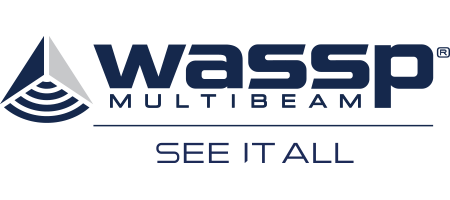INTRODUCING ABEL
Abel Carreño is the skipper of the F/V “Romina Segundo”, a purse seiner based out of the Spanish port of Portosín, located in the north west of the country in Galicia. Built in 1994, just over 20 metres long with a steel hull and a gross tonnage of 54 tons, the “Romina Segundo” is one of three vessels owned by the fishing company Colla Pesca and is used to catch pelagic species, mainly sardine and mackerel, close to shore in the Atlantic.
ABEL’S CHALLENGE
A firm believer in the value of sonar equipment, Abel had already installed several sonar devices from different manufacturers in the “Romina Segundo”. With these, he was already getting good information about the water column, but he wanted to know more about the sea floor. He wanted to map the bottom, to see any obstacles in detail; detail which the commercial charts simply don’t provide.
With his existing knowledge of sonar, Abel knew he needed a multibeam echosounder. He did his research and was soon talking to Alejandro Palmeiro (Alex) of Nautilus Oceanica, a WASSP distributor and installer of mainly hydrographic and oceanographic equipment. With the purchase of a WASSP F3i system, Abel became Alex’s first fishing customer.

Mapping the fishing ground "how close to the rocks can we set the net"
THE WASSP SOLUTION
The WASSP F3 series represents the third generation of the WASSP evolution. The F3i variation, with a 160kHz transducer, is packaged with a GPS compass and a motion sensor which enables the multibeam sonar to correct the Sea floor mapping for the vessels position, heading and movement, giving a true reflection of the sea floor. This is particularly important for purse seining as the fish being sought are often found close to underwater obstacles that can cause significant, and costly, damage to the fishing gear if the nets snag, something not uncommon to happen.

WASSP F3 - Mapping a School of fish over a drop off
By being able to build up a 3D map with the WASSP F3i, the skipper is able to identify not only any obstacles and hardness of the seafloor, but also how dense the school of fish is. Skilled operators can even identify the species of those fish, which offers another significant advantage. If, for example, the skipper has exhausted his sardine quota, or the sardine price is not very high at the time, he can select to catch fish schools he knows are mackerel , increasing sales value whilst saving time and fuel and avoiding regulatory penalties.
With its 224 beams, the WASSP F3i gives a 120˚ view of both the seabed and the water column, ensuring that nothing is missed. With a single beam sounder, anything to port or starboard of the vessel will effectively remain invisible.
SKIPPER ABEL’S OBSERVATIONS
“ I’m really impressed with the WASSP F3i’s bathymetric functions and, as far as I’m concerned, the WASSP system has already paid for itself. Early on, I was able to chart a rock which could have caused a lot of damage if it had fouled the nets. It took me just 20 minutes to fully survey it. This rock was not properly shown on my Electronic Chart. On another occasion, I identified a net that had been dumped or lost by another vessel at sea. Because it was off to starboard, and not directly beneath my vessel, I would never have seen it with a single beam sounder. But the F3i picked it up perfectly and, once again, saved me a big repair bill. My WASSP F3i not only saves me time, it also saves my fishing gear and makes the effort of all the crew more profitable.”
